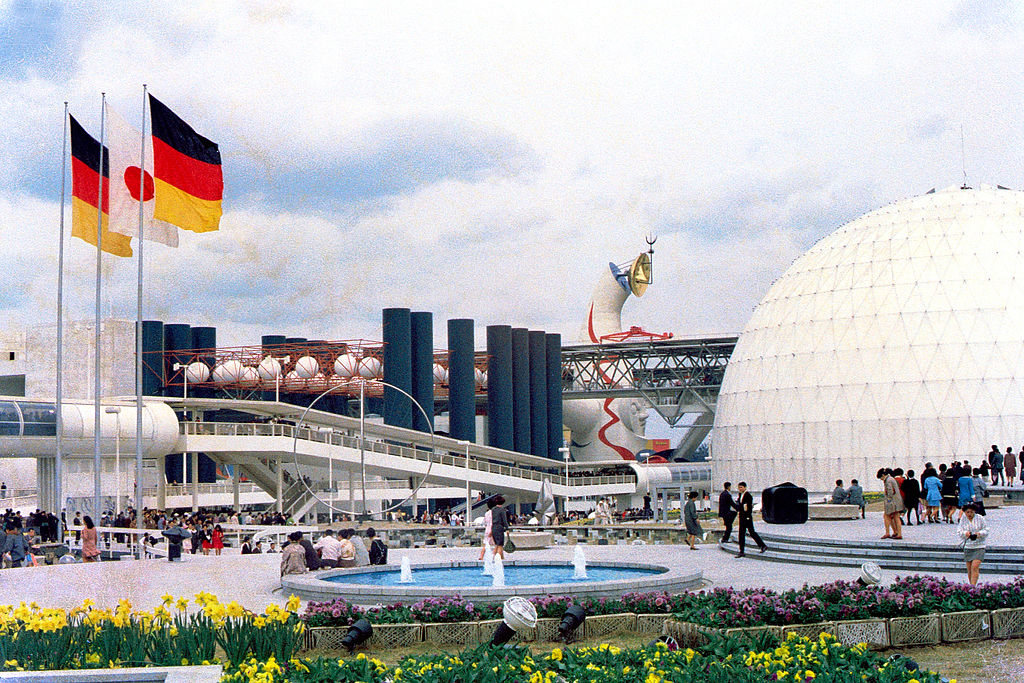May 23, 2017
A Reminder of the Time in Osaka When the World Came to Visit

The Tower of the Sun stands in Expo Commemoration Park as the standout reminder of the first World’s Fair ever held in Asia, Osaka Expo ’70. The idea of a World’s Fair took flight in London, England in 1851 under the banner of “The Great Exhibition of the Works of Industry of All Nations.” The idea caught on and afterwards there were 48 more World’s Fairs until 1970 – but never one in Asia.
Osaka was awarded the World’s Fair in 1966 and waited eagerly as major expositions were held in Montreal, Canada in 1967 and San Antonio, United States in 1968. When Osaka’s turn came, the city was ready with a master plan put together by celebrated modernist architect Kenzo Tange, who had been born in Osaka 57 years earlier.
The main theme of Osaka Expo ’70 was “Progress and Harmony for Mankind” and the planners envisioned their fair as more of a festival than an exposition. The world responded enthusiastically and a record 77 countries participated, many with wildly futuristic pavilions. The experimental architecture proved a hit with fair-goers as well and more than 64 million people attended the six-month event, one of the biggest turnouts in history.
Like many world’s fairs, Osaka Expo ’70 was notable for some of the technological innovations introduced in the pavilions. In the Fuji Group’s pavilion, the first-ever IMAX film was screened. The public also got its first demonstrations of mobile phone technology and magnetic levitation rail transportation in Osaka. In the United States pavilion visitors could get a glimpse of one of the moon rocks brought back from the Apollo space missions. Robots were very much in evidence around the city as Japan honed its reputation for mechanical innovation.
Osaka rolled out the welcome mat for the world by completing a new, ultra-modern airport just one month before the gates to the fair opened. Hotel room capacity in the city doubled from 4,000 and more than 500 Japanese households within an hour’s drive of the fairgrounds offered to make rooms available for visitors. The Japanese people went all out in preparation for the spotlight on the world stage as well. Elections were held in every prefecture in the country to select 233 official Miss Expo hostesses.
By almost every measure Osaka Expo ’70 was a success. Japan went on to host future world’s fairs in Okinawa (Expo ’75), Tsukuba (Expo ’85) and Nagoya (Expo 2005). Ultimately all the pavilions in Osaka were torn down. Where the historic world’s fair took place is now a wide lawn and natural garden in Expo Commemoration Park. Nearly half a million trees have been planted on the site. The 70-metre Tower of the Sun, the symbol of the fair, was preserved as a permanent reminder of the time Osaka brought pride to all of Japan.
The Tower evokes memories of Osaka Expo ’70 today but if you are around in the year 6970 you can enjoy some more tangible reminders of the year 1970 – a time capsule, part of world’s fair tradition – was buried with instructions that it be opened in 5,000 years.
Expo Commemoration Park
565-0826 Osaka Prefecture, Suita, Senribanpakukoen, 1−1 (map)
www.expo70-park.jp/
06-6877-7387
By takato marui (originally posted to Flickr as Korean Pavilion) [CC BY-SA 2.0], via Wikimedia Commons


About the author